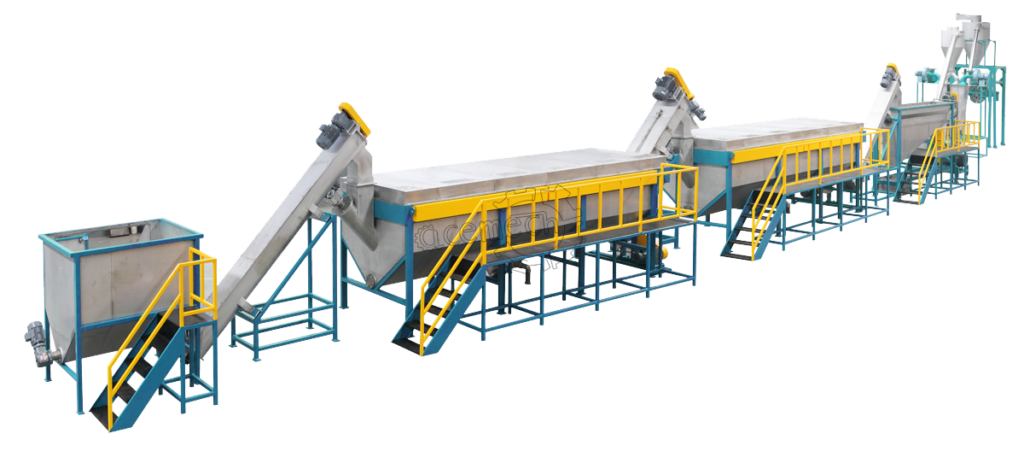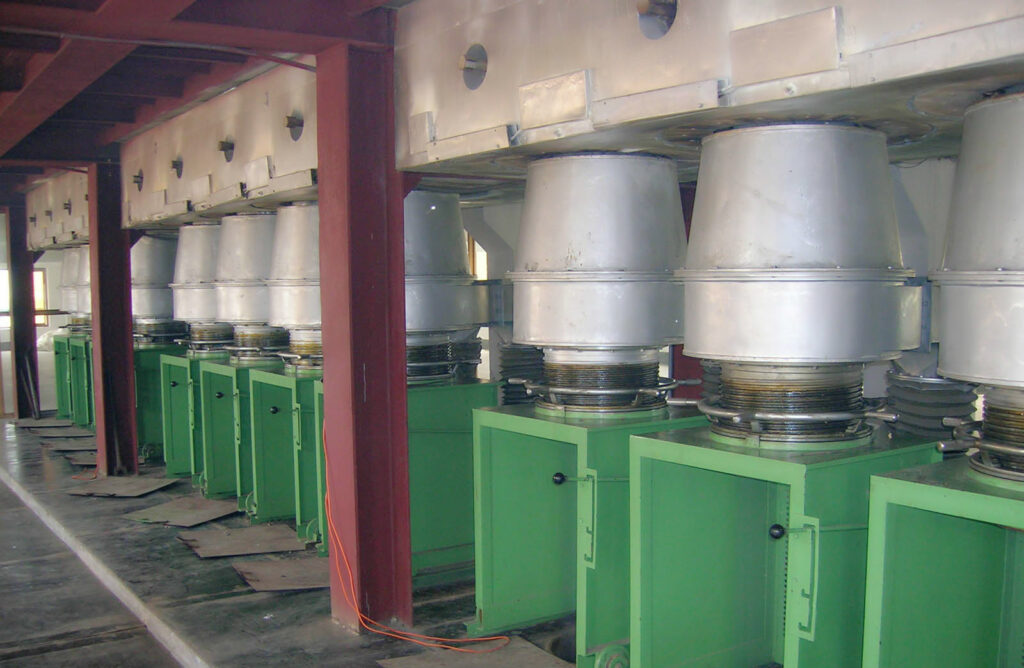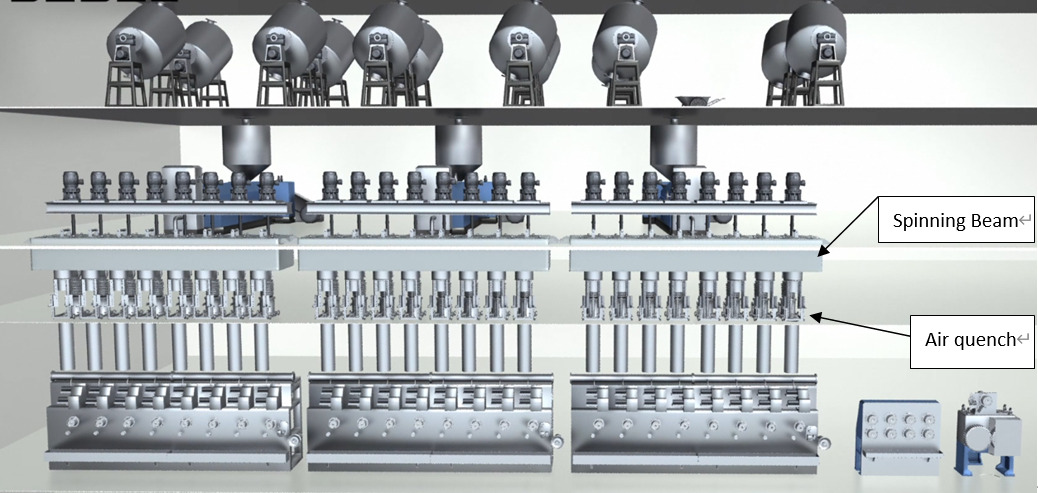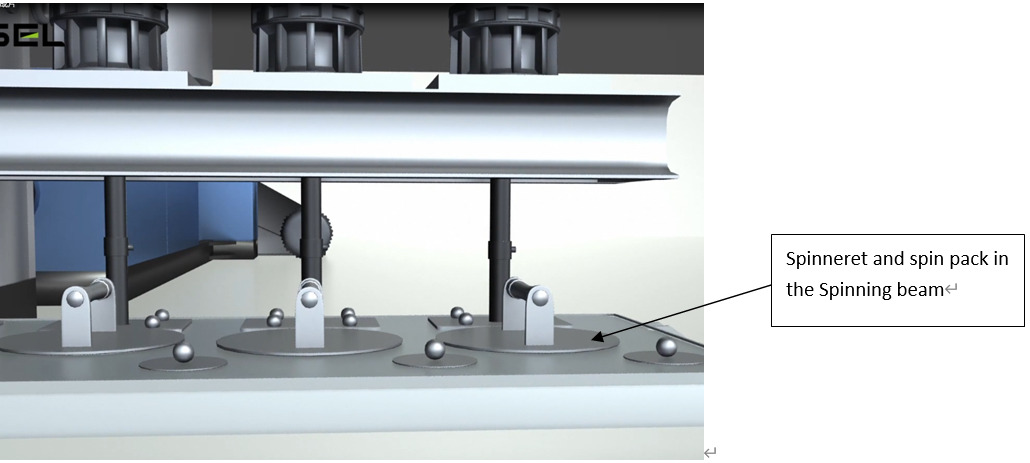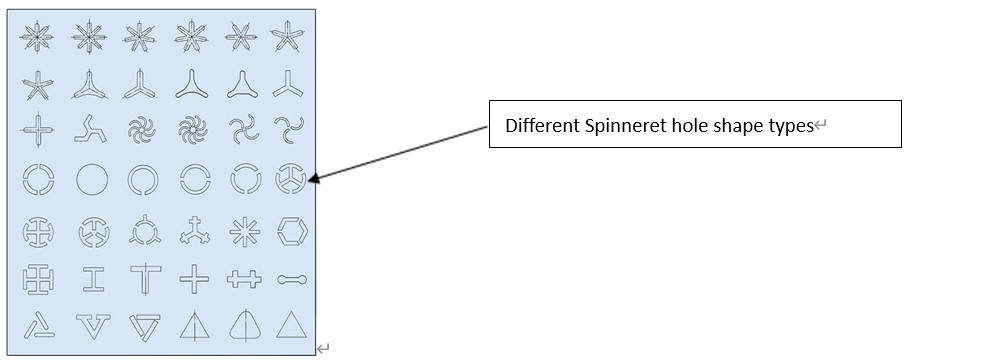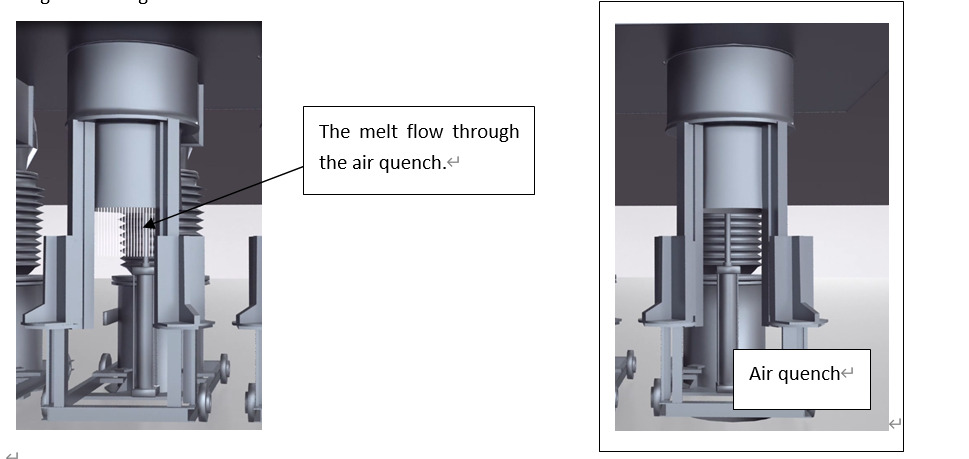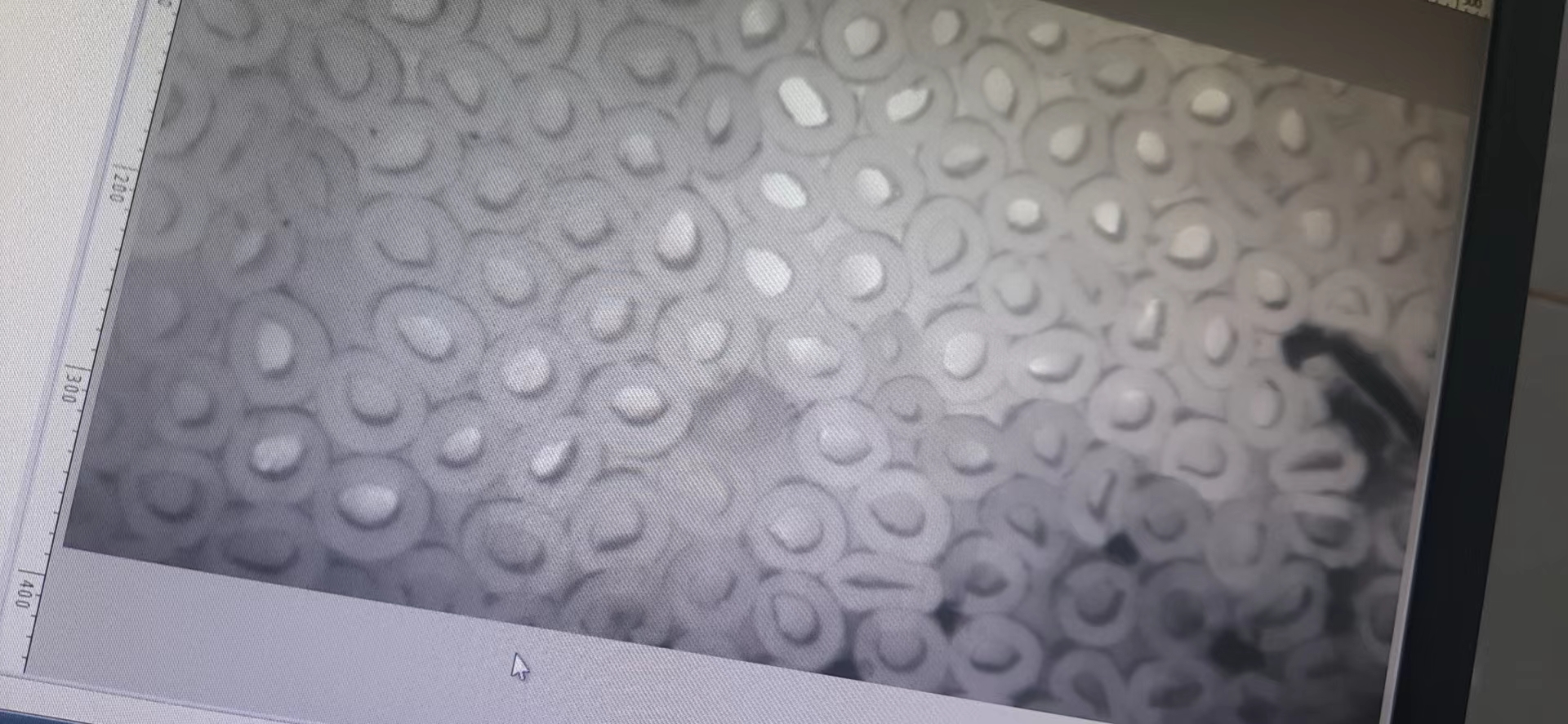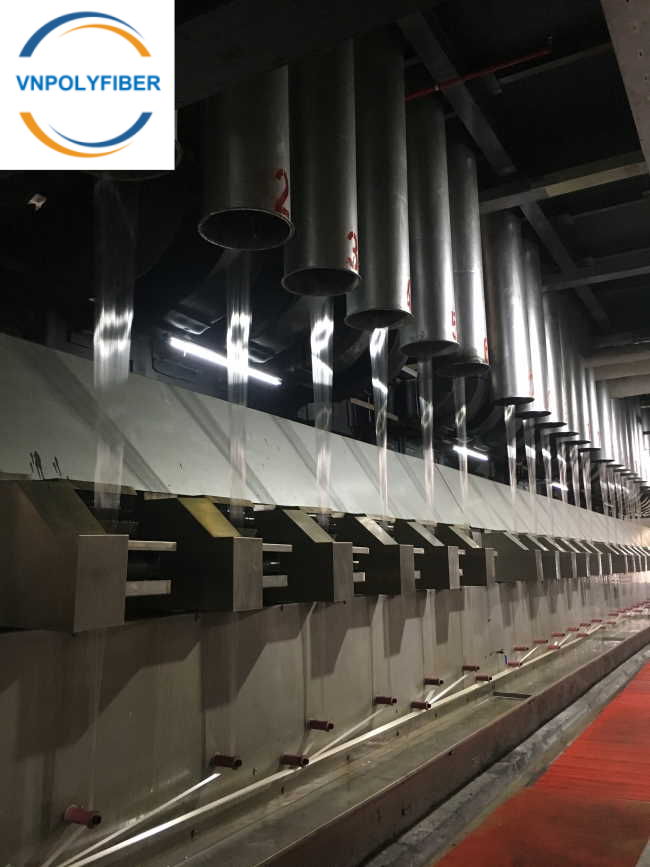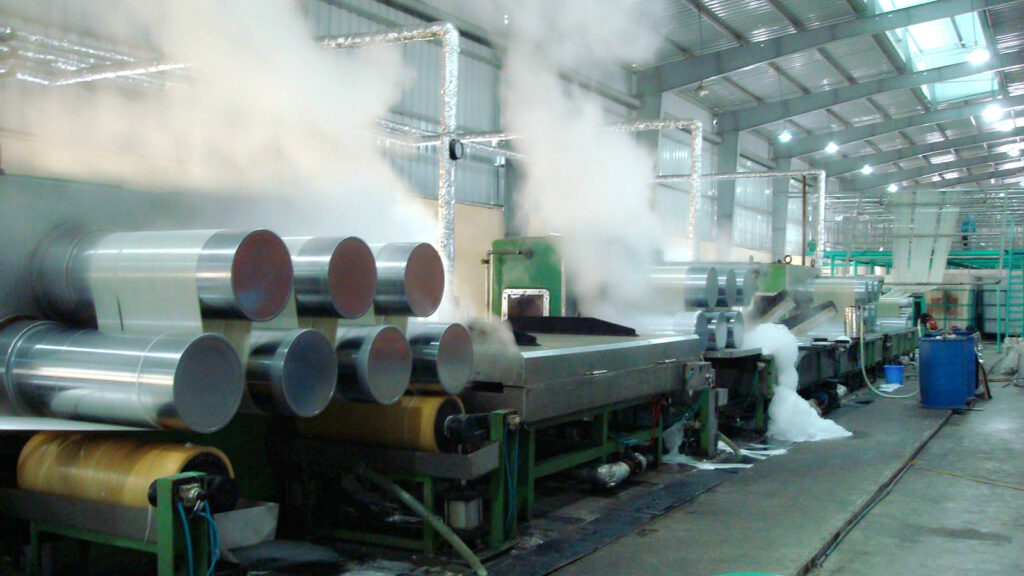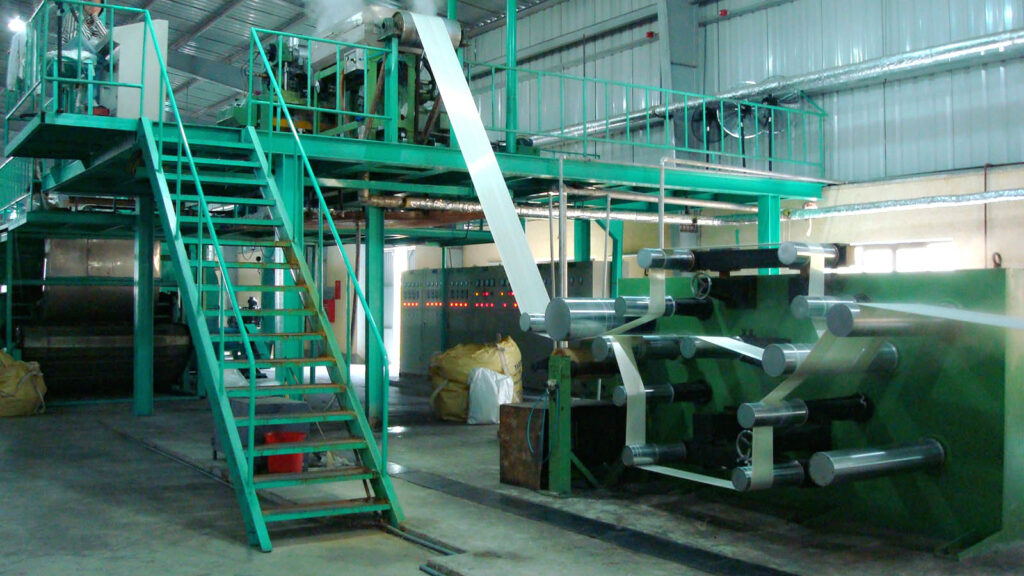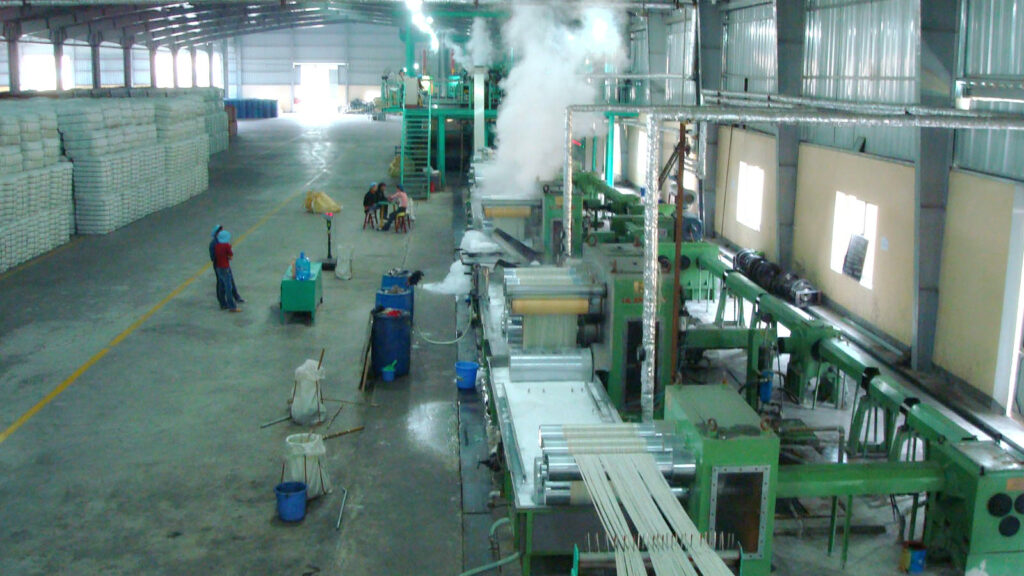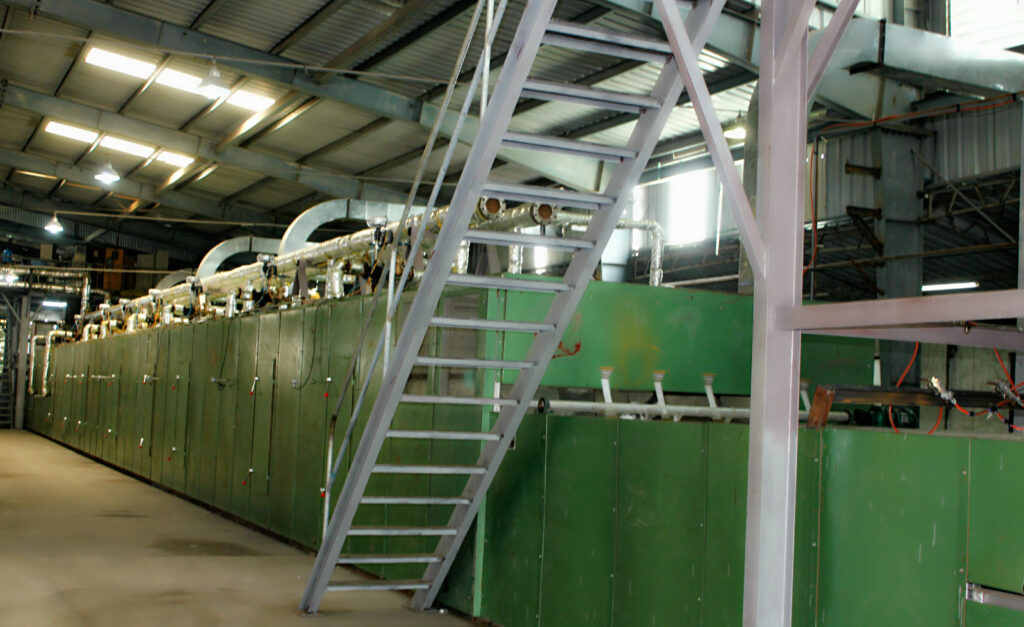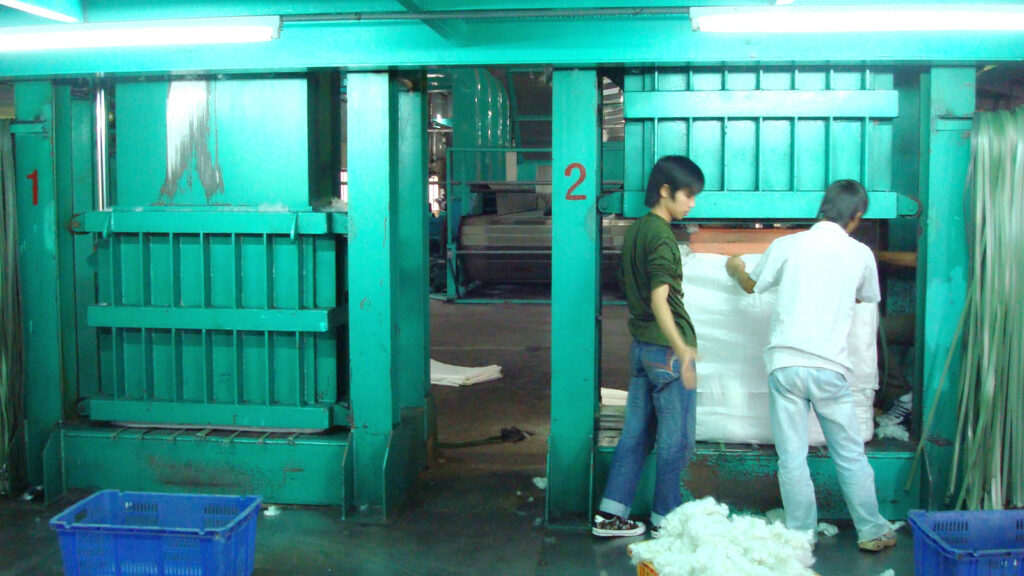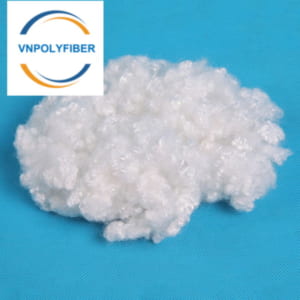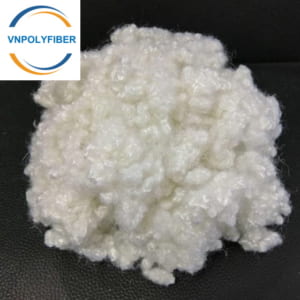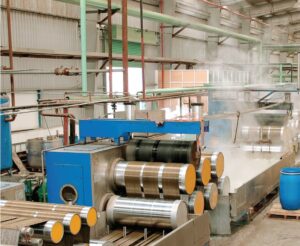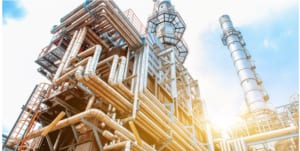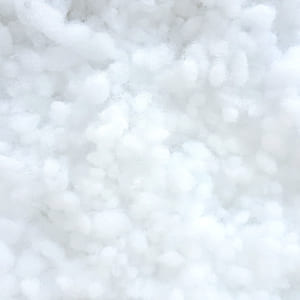What is Polyester Staple Fiber Production Process ?
Below is the detailed step-by-step PSF production process:
Wash and Dry – PSF Production Line
Pet flakes will be washed first when tons of pet bales send to the factory. Most of them have caps, plastic paper,etc.
Extruder and Quenching – PSF Production Line
PET bottle flakes are fed into screw extruder by the meaning of melting, mixing and filtering from hopper after being heated and dried,The melted PET will go through a filter to remove the impurity, like PVC and other materials,The melt goes into a spin beam in which specially-designed distribution piping system guarantees same dwell time and same pressure drop for the melt to reach each spinning position.
The melt becomes a small stream after being extruded from micro-holes of the spinneret and is cooled and solidified by airflow after passing through a low-damping quenching. The melt stream sprayed from spinneret becomes plastic shape monofilament in a very short time and the structure is changed. This change is mainly influenced by the velocity evenness of airflow from quenching. Air temperature and velocity, control of air blowing gap, and airflow steady under high velocity affect the direct factor of yarn quality. Therefore, it requires airflow from quenching with stability, uniformity, and adjustability.
For producing hollow fiber, spinning part is very important that it determines the shape of fiber whether it is well conjugated and hollow shape.
When the high temperature PET melt flow into the Spinning beam. There are spinnerets inside the spin packs for hollow shape processing.
The melt flows out of the microholes of the spinning nozzles and form the dribble of the melt. The C type hole on spinnerets helps form the hollowness of fiber.
Extrusive melt dribble is cooled evenly on the periphery of Tow after it flows through Circular Quench Device, the inside is cooled lastly relative to the periphery, thus forming the conjugated fiber after stretching, this Process need fast cooling with designed cooling direction.
Winder – PSF Production Line
The cooled and solidified filaments are oiled and damped by an oiling device to increase the cohesion of the yarn, to improve the antistatic property of the yarn, to reduce the friction between the yarn and the yarn, and also to reduce the friction between the yarn and equipment, and to improve the after-treatment property of the yarn,After passing through the winder, the yarn from every position is guided by godet roller to the end of take up the unit and is entered into the drawing-off roller, then is fed into Tow Can by sunflower rollers. Six-roll drawing-off and sunflower wheels are driven by a synchronous motor. The engaged depth of two sunflower rollers is adjustable. The drawing-off and sunflower rollers are with the low speed set for yarn string-up and easy operation. The spinning and take-up system is set with the collective communication system.
Can unit – PSF Production Line
Can traversing unit is driven by A.C. motors, which realizes to transporting change of empty can, reciprocating movement of tow can and delivery of laden can. This unit has two kinds of control: manually (except reciprocating movement) and automatic. When tow can reach certain weight by time setting, the programmable-control time counter gives off a signal, and then reciprocating mechanism automatically moves laden can to the center of the unit and delivering mechanism moves laden can out, in meanwhile, to move in empty can for continuous tow collection. Then the tow in a can will be balanced and sent to the after-treatment process.
The second part is finishing line, there are also five steps.
Creel stand – PSF Production Line
The tow creel is arranged for 4 rows, in which, two rows of them are put into using and the other two rows are preparing. The tows from Tow creel are divided into 3 nos. sheets for drawing. The tow cable comes from the creel is guided firstly by Tow guide frame and passed through a dip bath to split tow sheets evenly with certain width and thickness, and ensure more even spin finish in tow sheets, and then start the drawing process.
Stretcher – PSF Production Line
The range uses 2-stage drawing technology. The first drawing stage carries out between the first stretcher and the second stretcher. The temperature of the Draw bath is about 60℃~80℃. The draft ratio of the first drawing stage is completed 80%~85%. The second drawing stage carries in Steam box chest between the second stretcher and the third stretcher. The draft ratio of the second drawing stage is completed 15%-20%.
Stacker and crimper – PSF Production Line
After cooled and oiled, the tow sheets are sent into Tow stacker, 2 or 3 tow sheets are stacked into 1 tow sheet. The tilt angle of stacking rollers is adjustable for achieving stacking process. The width of the tow sheet and the quality of stacking is special important for crimping. After stacking, the tow sheet is sent into Crimper through the Tension control roller and Steam pre-heating box. The tow sheet is crimped through squeezing to assure the good performance of fiber in a later process.
Relax and heating setter – PSF Production Line
After crimping, the tows spread to chain board type conveying of Relaxing dryer. The tows are dried evenly by blowing of forced air and then cooled down below glass temperature.
Baler / Packaging – PSF Production Line
After crimping, the tows spread to chain board type conveying of Relaxing dryer. The tows are dried evenly by blowing of forced air and then cooled down below glass temperature. After dried, the tows are dragged to the upper floor for cutting by a Tension stand, which also guarantees the tows under tension evenness to feed Cutter in the tangential direction of the cutting reel. The tows are cut into fixing length of staple by adopting press cutting. After cutting, the cut fibers enter into baler chamber in gravity or through conveyor for baling, and then the bale is weighting, manual baling and labeling and then sent to the storage by fork lifter.
@tonytan91 #polyesterstaplefibberpillow #psf #polyesterfiber #polyester


